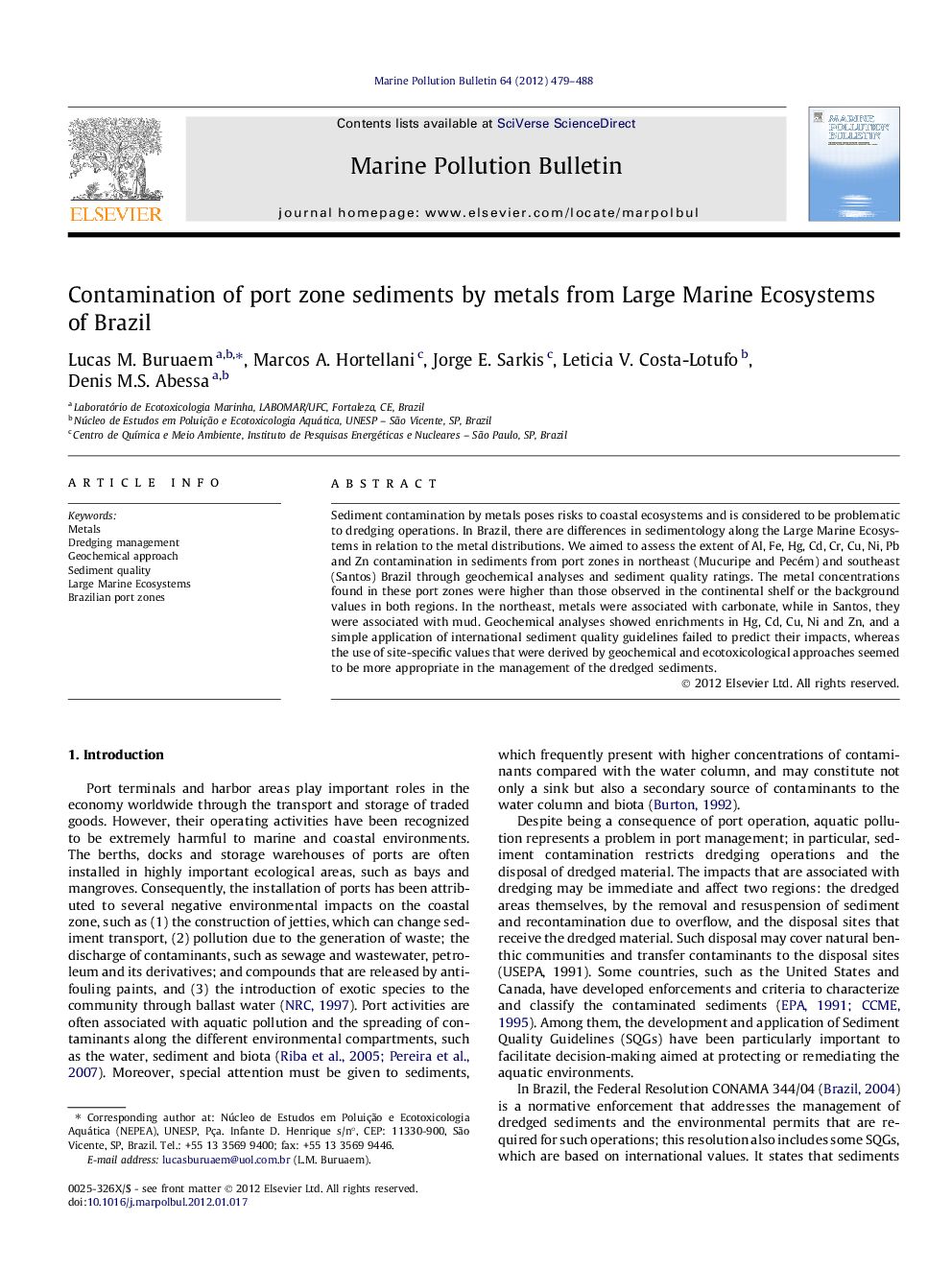| Article ID | Journal | Published Year | Pages | File Type |
|---|---|---|---|---|
| 6360466 | Marine Pollution Bulletin | 2012 | 10 Pages |
Sediment contamination by metals poses risks to coastal ecosystems and is considered to be problematic to dredging operations. In Brazil, there are differences in sedimentology along the Large Marine Ecosystems in relation to the metal distributions. We aimed to assess the extent of Al, Fe, Hg, Cd, Cr, Cu, Ni, Pb and Zn contamination in sediments from port zones in northeast (Mucuripe and Pecém) and southeast (Santos) Brazil through geochemical analyses and sediment quality ratings. The metal concentrations found in these port zones were higher than those observed in the continental shelf or the background values in both regions. In the northeast, metals were associated with carbonate, while in Santos, they were associated with mud. Geochemical analyses showed enrichments in Hg, Cd, Cu, Ni and Zn, and a simple application of international sediment quality guidelines failed to predict their impacts, whereas the use of site-specific values that were derived by geochemical and ecotoxicological approaches seemed to be more appropriate in the management of the dredged sediments.
⺠Metal pollution of harbor sediments from north and south Large Marine Ecosystems of Brazil were analyzed. ⺠Metal levels exhibit a distinct pattern of distribution according each region. ⺠A simple application of International Sediment Quality Guidelines has failed to predict environmental impacts. ⺠Geochemical approaches and site-specific sediment quality values were considered more appropriate to deal with this issue. ⺠We present the first issue concerning of dredged material quality in Ceará harbors.
